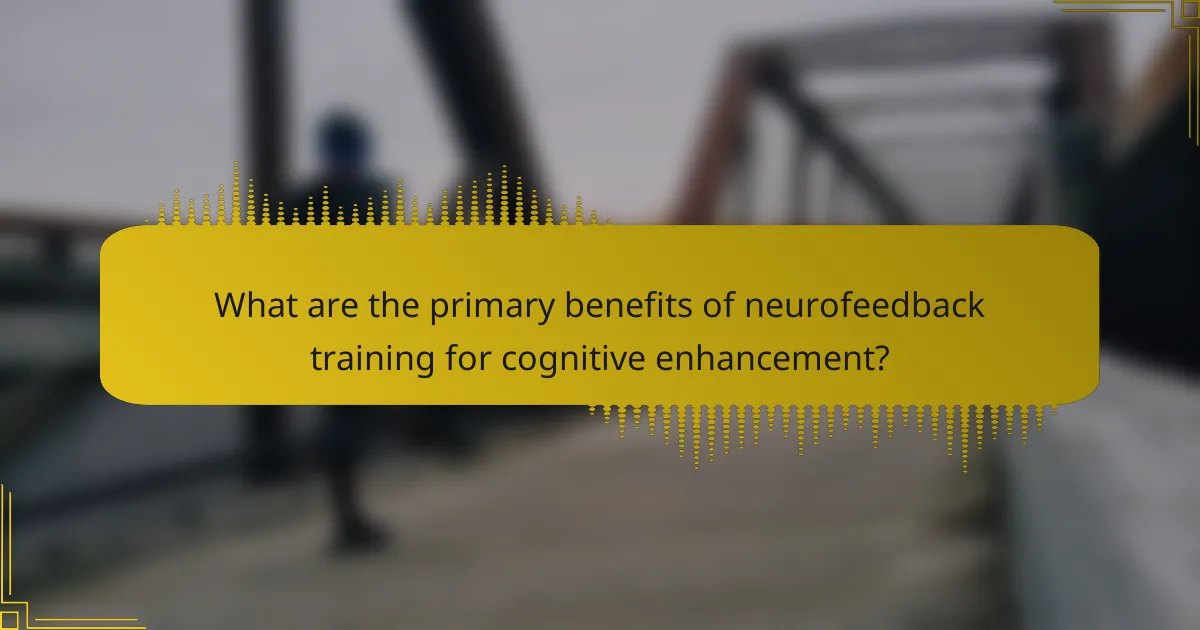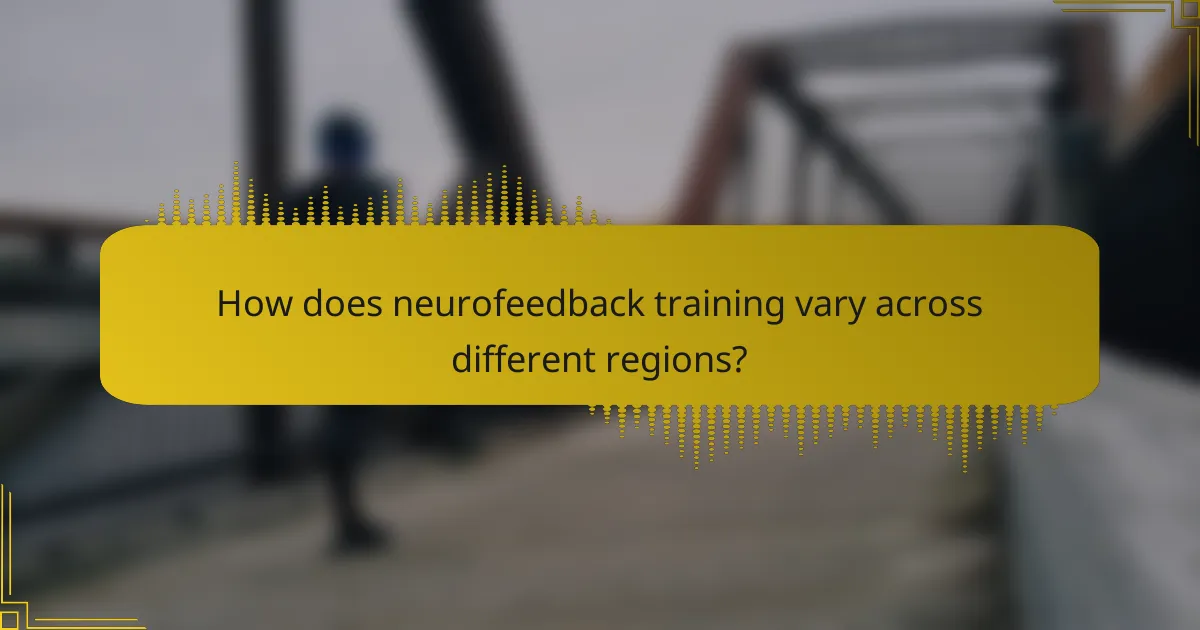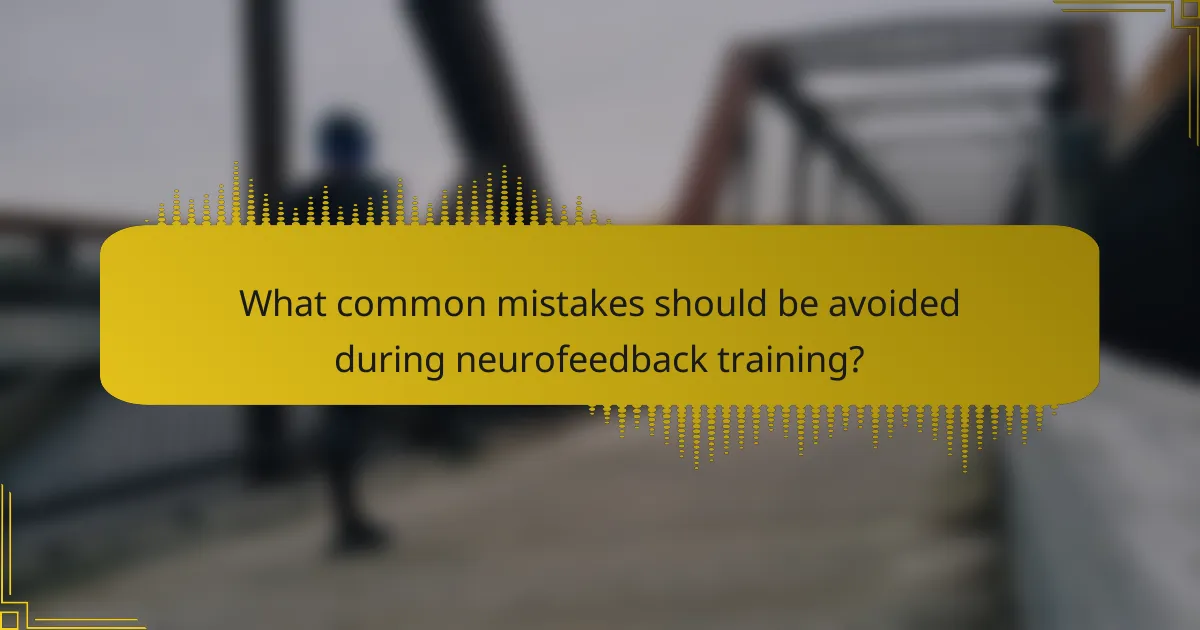Neurofeedback training offers significant benefits for cognitive enhancement and mood improvement by promoting self-regulation of brain activity. Key advantages include increased attention span, reduced anxiety, and enhanced emotional regulation. This non-invasive method fosters neuroplasticity and allows for personalized training sessions tailored to individual brain patterns. Additionally, neurofeedback can lead to lasting changes in brain function, improving overall mental clarity and focus.

What are the primary benefits of neurofeedback training for cognitive enhancement?
Neurofeedback training enhances cognitive function and improves mood by promoting self-regulation of brain activity. Key benefits include increased attention span, improved memory retention, reduced anxiety, and enhanced emotional regulation. Research indicates that participants often experience significant improvements in overall mental clarity and focus. Additionally, neurofeedback can lead to long-term changes in brain function, making it a unique tool for cognitive enhancement.
How does neurofeedback improve attention and focus?
Neurofeedback enhances attention and focus by training the brain to regulate its activity. This training improves cognitive functions through real-time feedback, allowing users to increase alpha waves associated with relaxation and decrease theta waves linked to distraction. Studies indicate a significant increase in attention span and task performance following neurofeedback sessions.
Can neurofeedback training enhance memory retention?
Neurofeedback training can enhance memory retention by optimizing brain function. Research shows that this training improves cognitive performance, including memory, by promoting better brainwave regulation. A study indicated a significant increase in memory recall among participants who underwent neurofeedback sessions. This approach uniquely targets individual brain patterns, allowing for personalized cognitive enhancement. As a result, users may experience improved focus and retention, leading to better academic and professional outcomes.
What role does neurofeedback play in reducing anxiety and stress?
Neurofeedback effectively reduces anxiety and stress by training individuals to regulate their brain activity. This training enhances self-awareness and promotes relaxation, leading to improved mood and cognitive function. Research indicates that neurofeedback can decrease symptoms of anxiety disorders, providing a non-invasive alternative to traditional therapies. Studies show that participants experience significant reductions in anxiety levels after consistent neurofeedback sessions, highlighting its potential as a beneficial tool for mental wellness.

What unique attributes set neurofeedback training apart from other cognitive enhancement methods?
Neurofeedback training stands out due to its unique ability to provide real-time brain activity feedback, fostering self-regulation of brain function. This method enhances cognitive performance and mood by promoting neuroplasticity, which is the brain’s capacity to reorganize itself. Unlike traditional cognitive enhancement methods, neurofeedback is non-invasive and personalized, allowing tailored training sessions that adapt to individual brain patterns. This specificity leads to more effective outcomes in areas such as attention, anxiety reduction, and emotional regulation. Additionally, neurofeedback has shown rare attributes like the potential to facilitate lasting changes in brainwave patterns, setting it apart from other cognitive enhancement techniques.
How does neurofeedback provide real-time feedback on brain activity?
Neurofeedback provides real-time feedback on brain activity by using EEG technology to monitor electrical signals from the brain. This process allows individuals to see their brain activity displayed visually, enabling them to learn how to self-regulate their mental states. Neurofeedback enhances cognitive performance by reinforcing positive brain patterns and reducing negative ones. Research indicates improved focus and emotional regulation as individuals engage with their brain data, fostering better mood and cognitive enhancement outcomes.
What specific brainwave patterns are targeted in neurofeedback sessions?
Neurofeedback sessions primarily target specific brainwave patterns, including alpha, beta, theta, and delta waves. These patterns are associated with various cognitive functions and emotional states. For instance, increased alpha activity may enhance relaxation and creativity, while beta waves are linked to alertness and focus. Theta waves can promote deep relaxation and emotional processing, and delta waves are crucial for restorative sleep. By training these brainwave patterns, neurofeedback aims to improve cognitive enhancement and mood stability.

What rare benefits can be achieved through neurofeedback training?
Neurofeedback training can lead to rare benefits such as enhanced creativity, improved emotional resilience, and increased self-regulation. These outcomes are less commonly associated with traditional cognitive enhancement methods. For instance, some users report significant improvements in problem-solving abilities and adaptability to stress, showcasing unique cognitive shifts. Additionally, neurofeedback may facilitate deeper states of relaxation, which can enhance overall well-being and mood stability.
Can neurofeedback lead to long-term improvements in emotional regulation?
Yes, neurofeedback can lead to long-term improvements in emotional regulation. Research indicates that consistent neurofeedback training enhances brain function, particularly in areas related to emotional control. A study found that participants experienced significant reductions in anxiety and mood disorders after a series of neurofeedback sessions. This training fosters greater self-awareness and emotional resilience, allowing individuals to manage their emotions more effectively over time. Additionally, neurofeedback has shown potential in promoting neuroplasticity, which supports sustained emotional regulation improvements.
What unique case studies highlight extraordinary outcomes from neurofeedback?
Neurofeedback training has shown extraordinary outcomes in various case studies, particularly in cognitive enhancement and mood improvement. For instance, a study involving children with ADHD demonstrated significant reductions in symptoms, leading to improved focus and behaviour. Another case highlighted adults with anxiety who experienced notable mood stabilization after consistent neurofeedback sessions. These examples underscore the unique ability of neurofeedback to facilitate measurable cognitive and emotional benefits. Additionally, rare cases reveal individuals with traumatic brain injuries achieving remarkable recovery in cognitive functions through targeted neurofeedback protocols.

How does neurofeedback training vary across different regions?
Neurofeedback training varies significantly across regions due to cultural attitudes, available technology, and regulatory frameworks. In North America, it often emphasizes cognitive enhancement and mood improvement through advanced neurotechnology. In Europe, approaches may focus more on mental health applications, integrating traditional therapies. In Asia, practices might blend neurofeedback with mindfulness techniques, reflecting holistic health philosophies. Regional differences in training protocols can affect efficacy and user experience.
What are the cultural perceptions of neurofeedback in various countries?
Cultural perceptions of neurofeedback vary significantly across countries, influencing its acceptance and application. In the United States, neurofeedback is often viewed positively, associated with cognitive enhancement and mood improvement. Conversely, in some European countries, skepticism exists due to the lack of extensive scientific validation. In Asia, particularly in Japan, neurofeedback is integrated into wellness practices, reflecting a holistic approach to mental health. These diverse perspectives shape how neurofeedback is utilized in different cultural contexts, impacting its popularity and accessibility.
How does accessibility to neurofeedback training differ globally?
Accessibility to neurofeedback training varies significantly across different regions. In developed countries, advanced technology and trained professionals make neurofeedback widely available. In contrast, developing nations often face limited access due to financial constraints and lack of trained practitioners.
Countries like the United States and Canada have established clinics and research institutions, promoting awareness and acceptance. Conversely, regions in Africa and parts of Asia may have sporadic access, primarily through private practitioners or limited community programs.
The effectiveness of neurofeedback training also depends on cultural perceptions of mental health. In cultures where mental health is stigmatized, individuals may avoid seeking such treatments. As a result, global accessibility influences the overall benefits of neurofeedback for cognitive enhancement and mood improvement.

What are the core features of effective neurofeedback training programs?
Effective neurofeedback training programs enhance cognitive function and improve mood through personalized protocols, real-time feedback, and evidence-based methodologies. These programs often include features such as tailored training sessions that adapt to individual brain activity, a variety of neurofeedback techniques like EEG and fMRI, and measurable progress tracking to ensure efficacy. Additionally, they frequently incorporate relaxation techniques to reduce anxiety and promote emotional stability, further supporting cognitive enhancement. The unique attribute of these programs lies in their ability to provide immediate feedback, allowing users to adjust their mental states effectively.
What types of neurofeedback protocols are most commonly used?
Neurofeedback training employs various protocols to enhance cognitive function and improve mood. Commonly used types include Alpha/Theta training, Beta training, and SMR (Sensory Motor Rhythm) training.
Alpha/Theta training focuses on promoting relaxation and creativity, often beneficial for anxiety reduction. Beta training aims to enhance alertness and concentration, making it suitable for attention-related issues. SMR training helps improve self-regulation and calmness, particularly valuable for individuals with ADHD. Each protocol targets unique brainwave patterns, contributing to specific cognitive and emotional outcomes.
How important is the role of a trained neurofeedback practitioner?
A trained neurofeedback practitioner is crucial for effective cognitive enhancement and mood improvement. Their expertise ensures accurate assessment and personalized training protocols. Practitioners guide clients through the neurofeedback process, optimizing brain function and emotional regulation. Proper training can lead to significant improvements in attention, anxiety reduction, and overall mental well-being.

What common mistakes should be avoided during neurofeedback training?
To maximize the benefits of neurofeedback training, avoid common mistakes such as inconsistent session attendance, neglecting to track progress, and failing to communicate openly with the trainer. Consistency in training sessions is crucial for cognitive enhancement and mood improvement. Tracking progress helps identify effective strategies and adjustments needed for optimal results. Open communication with the trainer ensures personalized guidance and addresses any concerns that may arise during the training process.
How can individuals ensure they are choosing a reputable neurofeedback program?
To choose a reputable neurofeedback program, individuals should research the provider’s credentials, experience, and client testimonials. Verify that the program adheres to established protocols and utilizes evidence-based techniques. Look for programs with certified practitioners and inquire about their training. Additionally, consider the program’s track record for cognitive enhancement and mood improvement, as well as any unique features it may offer, such as personalized treatment plans.
What are the best practices for maximizing the benefits of neurofeedback training?
To maximize the benefits of neurofeedback training, maintain consistency in sessions, monitor progress, and integrate complementary practices. Regular, structured sessions enhance cognitive performance and mood stability. Tracking progress allows for adjustments, ensuring personalized training. Incorporating mindfulness or meditation can further amplify neurofeedback’s positive effects.